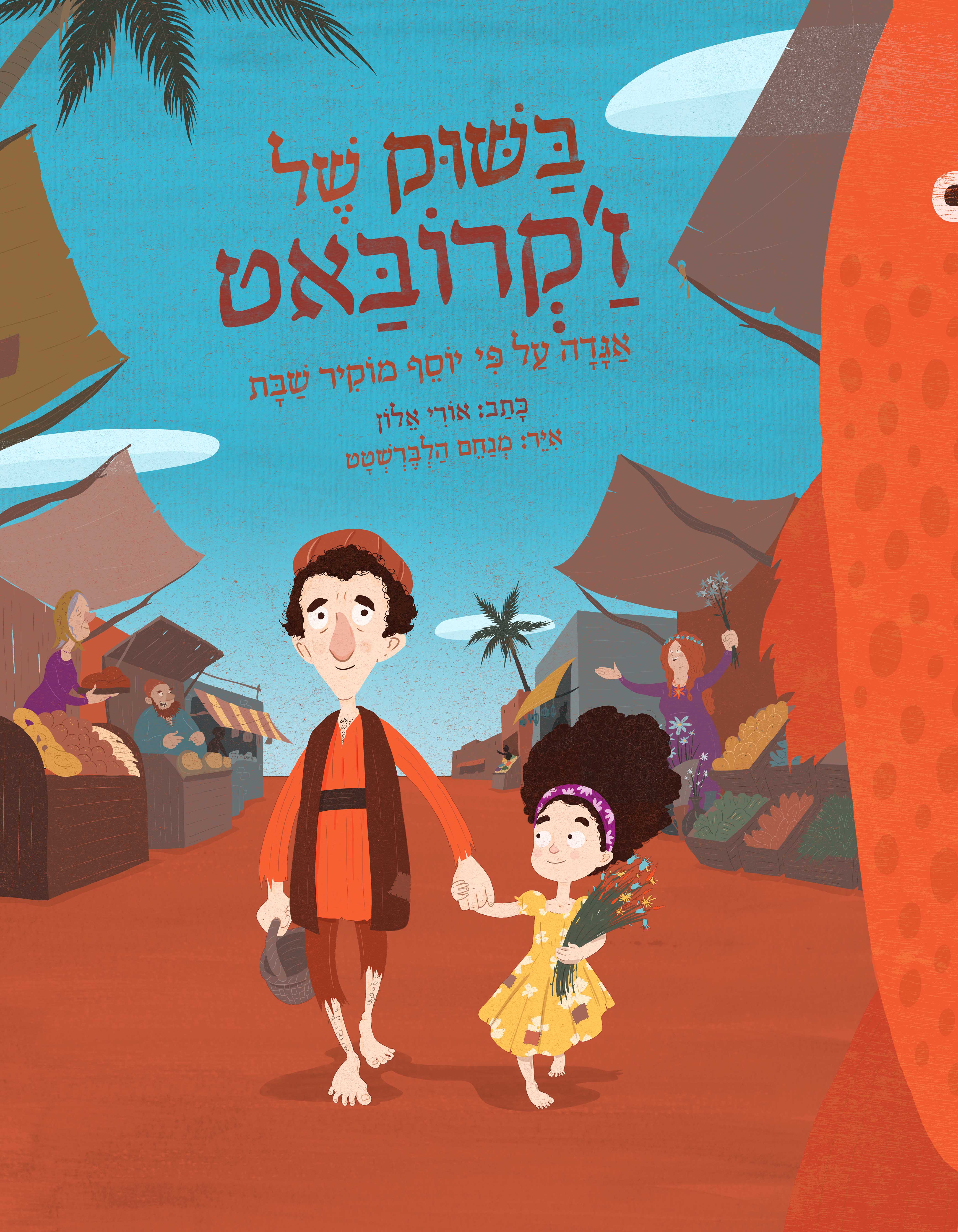In the Market of Zhakrobat / By Uri Alon
Illustrations: Menachem Halberstadt
Dear Parents,
The famous tale of “Joseph and the Shabbat Fish” is known to us in many different adaptations, and is presented here in a very funny rhyming version.
“This Day is More Precious than All Other Days” (from a Shabbat song)
Joseph goes to the Zhakrobat market looking for special things to prepare for the Sabbath, to honor the important “guest” that visits his home each week anew. These preparations for Shabbat build up anticipation of the day, and help celebrate it as something special and different from the rest of the week. The story also invites us to think about wealth and poverty, and about ways to achieve happiness and spiritual contentment.
Shabbat shalom and happy reading!
Family Activities
- Talk with your children about the two protagonists in the story, Balthazar and Joseph, and compare them. Balthazar has much treasure at home but doesn’t share his wealth with others, whereas the impoverished Joseph is content with his lot in life and opens his home to guests on Shabbat.
You may want to discuss the difference between being “thrifty” and being “stingy” (both terms used in the story), and talk about the kind of generosity that doesn’t depend on having money.You might also discuss the concept of envy, and ask your children why they think Balthazar was so determined that his treasure not fall into Joseph’s hands.
- Using simple props (you could make a precious “diamond” out of a crumpled ball of aluminum foil, and use a towel or scarf for a turban), you could dress up as the characters in the story and put on a family play. You could also use dolls, puppets, and stuffed animals to put on a show about this story.
- Joseph’s daughter goes with him on his trip to the market. Where do you do your shopping – at a farmers’ market, or at the supermarket? A visit to a bustling farmers’ market can be an enjoyable adventure for young children. You could work together to write and illustrate ashopping list for Shabbat, and then look for them in the farmers’ stalls at the market, or at the store.
- After reading the story, you can talk with your children about the way your own family celebrates Shabbat. What does your family do that is special? Who are your guests? You might work with your children to make an album of photos and drawings: “Our Shabbat,” featuring the people and things that make the Sabbath day special in your family.
- Do you, like Joseph and his family, enjoy hosting or being a guest on Shabbat? Many children enjoy taking part in the preparations for entertaining guests into their home. They can make a “Welcome” sign and hang it on the front door, help set the table, help with kitchen chores, or decorate the table with special drawings for each place setting.
- Many sources tell us about the unique character of Shabbat and the preparations for the day. Together, think of all the songs and stories you know about Shabbat (for example, “Who Loves Shabbat” by Ehud Manor; “Chanaleh and the Sabbath Dress” by Yitzchak Demiel; “The Missing Spice” arranged by Devorah Omer; etc.).
- Do you know a different version of the “Joseph Who Treasures Shabbat” story? If you do, you can share it with your children and compare the differing versions.
- The illustrations on the final pages of the book tell us, without words, what happens at the end of the story. Look at the illustrations together, and then use your ownwords to describe what happens after Joseph buys the big fish in honor of Shabbat. Notice the many figures that the illustrator added to the pictures throughout the story, and maybe invent a dialogue between these gossiping bystanders and Joseph.
Have fun reading and talking about this book!
The story of “Joseph Who Treasures Shabbat,” as told in Aramaic in the Babylonian Talmud, Tractate Shabbat 119:
Joseph-who-treasures-Shabbat had a neighbor who owned a lot of property. Fortune-tellers told him, “Joseph-who-treasures-Shabbat will consume all your property.” — [So] he went, sold all his property, and bought a precious stone with the proceeds, which he set in his turban. As he was crossing a bridge, the wind blew it off and cast it into the water, [and] a fish swallowed it. [Subsequently] it [the fish] was hauled up and brought [to market] on the Sabbath eve, just before sunset. “Who will buy it at this late hour?” they protested. “Go and take it to Joseph-who-treasures-Shabbat,” they were told, “as he is in the habit of buying a great deal for Shabbat.” So they took it to him. He bought it, opened it, found the jewel inside, and sold it for thirteen vessels filled with gold coins. A certain old man met him [and] said, “He who lends to the Sabbath, the Sabbath repays him.”











